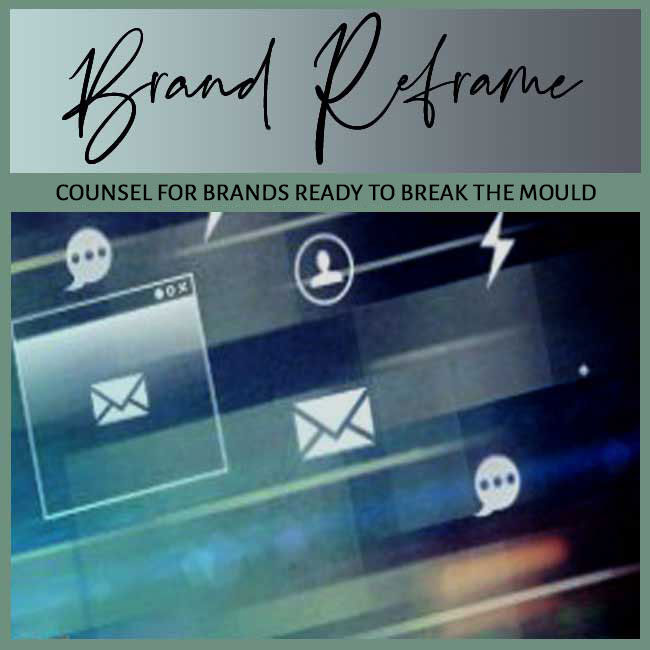
FOCUS: BRAND RELEVANCE LOSS | AUDIENCE: STEWARDS OF PLATEAUED BRANDS
BY: SHOBHA PONNAPPA | BRAND BREAKTHROUGH STRATEGIST | 45 YEARS | 125+ CLIENTS
I answer 6 tough questions about how to handle brands that sometimes get sidelined by loyal customers who feel they’ve moved on.
I often meet brand stewards who are baffled by the quiet churn of once-committed customers. On the surface, these clients remain polite, even appreciative. But under the surface, their needs have shifted. They crave fresh challenges, upgraded services, or deeper relevance. And if your brand doesn’t evolve with them, it risks becoming a fond memory … not a present solution. In this post, I tackle six hard-hitting questions about how customer growth can leave brands behind.
When a brand stays static while its customers grow, a disconnect forms. Their aspirations, problems, or context may have evolved … but your positioning hasn’t. This doesn’t feel like a betrayal to them. It feels like you simply stopped being useful. Relevance is a moving target, and if you don’t keep tracking it, you get left behind.
Often, brands mistake loyalty for permanence. But in reality, loyalty depends on alignment. If your brand once solved a problem they’ve now outgrown, they’ll seek something that reflects who they are today. Polite disengagement is often a signal, not a rejection. It says, “You’ve stayed where you were. We haven’t.”
Consistency is crucial … but only when it’s dynamic. There’s a difference between consistent values and stagnant delivery. If you offer the same thing the same way over time, customers start seeing you as dated, not dependable.
What builds trust today is relevance plus reliability. Evolving your brand doesn’t mean betraying your core. It means adapting your expression of that core to meet the rising expectations of those you serve. Growth isn’t a threat to consistency … it’s proof of it.
You won’t hear the real truth in satisfaction surveys. Customers don’t always articulate disconnection … they simply drift. To uncover real shifts, you need to listen beneath the praise. Patterns of hesitation, slower repeat purchases, or fewer referrals are often your first clues.
One powerful tool I use is customer narrative mapping. By reviewing the evolving life stages, work contexts, or decision-making priorities of your ideal clients, you can spot the new questions they’re asking. Where their goals change, your brand must reposition.
Start by separating your essence from your execution. Your core belief … what you stand for … likely hasn’t changed. But your offers, tone, or delivery may need to. Identity is not the same as packaging.
Successful repositioning is less about reinvention, more about re-expression. When you speak to your evolving audience in language that meets their present needs, you’re not abandoning your roots … you’re watering them. Strategic evolution deepens identity.
This is more common than brands admit. Often, your early adopters or premium buyers are the first to evolve. They tend to seek the cutting edge … and if you don’t offer it, they move on. Losing them can hurt your margins and momentum.
To win them back, you don’t have to chase trends. You need to understand their current worldview and recalibrate your value narrative. Speak to the business impact, emotional resonance, or strategic edge they now crave. Profit follows perceived progress.
Absolutely … but it requires humility and clarity. First, accept that what worked before may not work again. Then, re-approach your market not as an authority, but as a listener. Relevance is regained through recognition, not reinvention.
Many of my clients have successfully revived their customer base by reframing their expertise in ways that feel timely. Whether through rebranding, content strategy, or upgraded services, they made their brand feel new … without discarding their DNA.
If these questions resonate, your brand may still be respected … but no longer needed. That perception can quietly undercut growth. The solution isn’t to shout louder, but to signal smarter. When your brand evolves with your customers, you don’t just retain relevance … you reclaim leadership. Your best buyers didn’t outgrow you … you just stopped growing with them.
If you’re an investor seeking momentum for your portfolio brands, this FAQ Insight Post I wrote could interest you: “FAQs: Why Investors Worry About the Brand’s Internal Clarity.“
And if you’re a solo expert looking to sharpen traction, this FAQ Insight Post I worked on may resonate: “FAQs: When You’re Introduced by Your Category, Not Contribution.“

"One BIG IDEA can turn brand stagnation into unstoppable movement. Spots are limited each week ... book your breakthrough session now."
Shobha Ponnappa
More Breakthrough Ideas … Case Studies & FAQs … from the Brand Relevance Loss Category
Case Studies
FAQ Insights
Smart insights, real-world frameworks, and idea-driven clarity – designed to help brands move.
Get my fortnightly Brand Reframe newsletter. Smart insights, distilled thinking, and focused momentum to help your brand lead.

Get my free AI strategy guide. Smart prompts, sharper briefs, and practical ways to make AI support your brand momentum.

Just fill in the form to join. Get my newsletter and the guide shown alongside, all with several game-changing tips.